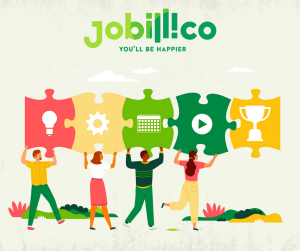Control Your Own Onboarding and Avoid Quick Quitting!
 Publié le 31 March 2023
Publié le 31 March 2023
Learn to improve the training and onboarding process in avoid quick quitting to ensure engaged employees and high retention rates.
When changing jobs, workers often think that their employer will guide them during the integration period and that there is little preparation to be done on their part. They would be wrong, as 88% of companies do not properly integrate their new hires. Generally, company programs focus on administrative aspects and last for a week or two. As a result, be aware of the “quick quitting” phenomenon: 20% of employees leave or are dismissed within the first 45 days of employment.
Who is responsible for your onboarding? Human resources, your manager, stakeholders, or sponsors, of course, but the main responsibility rests on your shoulders, as someone starting a new role. Onboarding programs are often discussed from the company’s point of view, regarding the importance of retention and employer branding. But let’s take a different perspective, yours.
Your integration begins from the moment you accept a new position and should even be part of the hiring process. Do your next employer’s values match yours? What will your mandate be? Are you the fifth person recruited in five years to play this role, or is it a new position? Did someone internally covet this job? What is the profile of the company you are joining? What are the expectations and issues? Unfortunately, this step is often neglected. For all the reasons you can imagine, candidates are often uncomfortable asking these questions.
Pitfalls to avoid during onboarding:
What are the dangers that await you based on your profile? For example, if you are a person with a strong personality, have accomplished great achievements, have confidence in your abilities, and like to deliver results quickly, the first trap will be to want to contribute too quickly to the organization. Integration is emotional. You want to show that the company made the right choice. It is then tempting to make quick decisions to build your credibility and have an immediate impact. Everything is rolling at a fast pace during the first few weeks. You need to find your bearings to avoid missteps that may lead to quick quitting.
What is the solution to finding a balance between humility and audacity, managing your emotions, communicating strategically, integrating quickly while deploying your leadership carefully? A personal onboarding plan aligned with the company’s plan. An integration schedule of 90 days will allow you to build your internal network of contacts, understand the organizational culture, adapt to the context, and define expectations towards you.
The main stages of onboarding:
Pre-integration:
During the pre-integration period (between the moment you accept the position and day 1), the goal is to obtain relevant information about the company (organizational charts, financial reports, collective agreement, notice of your appointment, integration plan if there is one, etc.). You must communicate with certain strategic stakeholders, prepare your message (be ready to bounce back during your introduction), and have a conversation with your manager to prepare for day 1.
The first month:
During the first 30 days on the job, building a network of contacts is at the heart of priorities. The objective is to identify and meet 20 to 40 people across different departments and at all levels of the company to understand the culture, context, and expectations. This will enable you to identify your allies, who will have an impact on your success and you on theirs. Each meeting should be planned based on the person’s profile.
The second month:
The second month begins with a self-evaluation and alignment activity with your manager. This allows you to present your initial impressions and take stock. Are you both on the same page regarding company goals? What skills or attitudes could you work on quickly? What do you need to feel comfortable and part of the team? Have you made any mistakes and how can you make up for them? How do you evaluate your communication at the different meetings you have attended? What do you need to change going forward to avoid quick quitting? This will be a good time to start your diagnosis, conduct a SWOT (acronym for strengths, weaknesses, opportunities, and threats) in order to present your initial findings to your manager and team at the end of the second month.
The third month:
In the third month, you will want to take a step back to make sure you have all the elements in hand to plan the next few months by creating your strategic action plan. It is also a good time for feedback with your colleagues. Good introspection is required. Take the time to ask yourself to what extent this new position has an impact on your personal life and decide if it offers the right work-life balance. Ensuring the proper balance will help avoid quick quitting.
A personal 90-day onboarding plan will help you stay on track, avoid pitfalls, assess opportunities, understand expectations, develop your patience while accelerating your integration. A good strategy is a way to guard against emotional temptations that integration involves. Ensuring a smooth onboarding and training process is beneficial for all employees and helps to avoid quick quitting when a new career path is just getting started.







